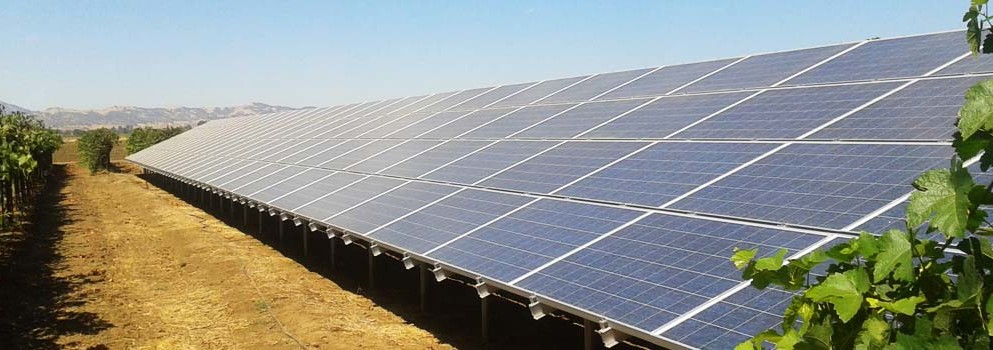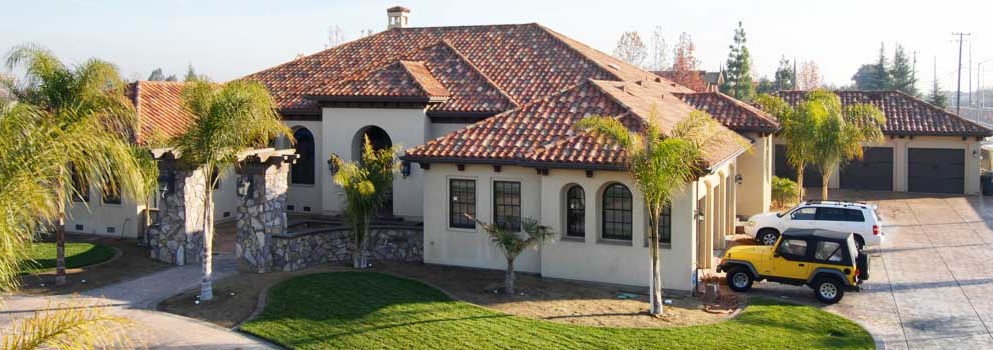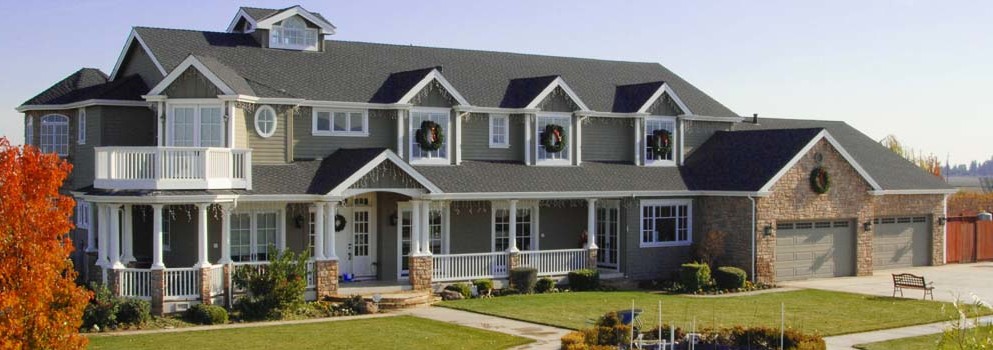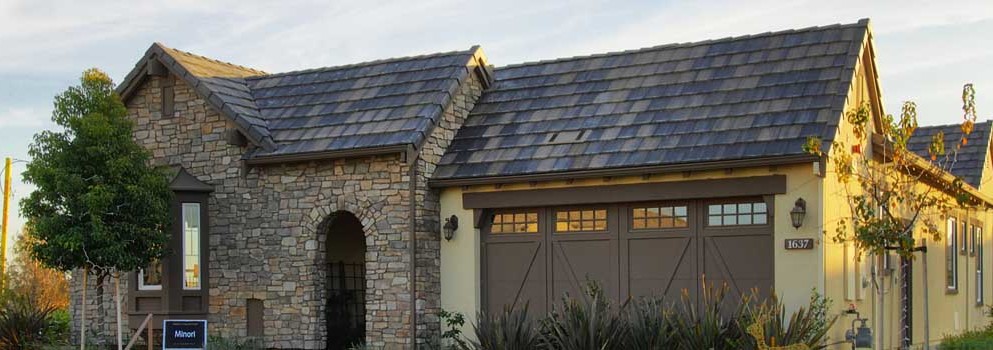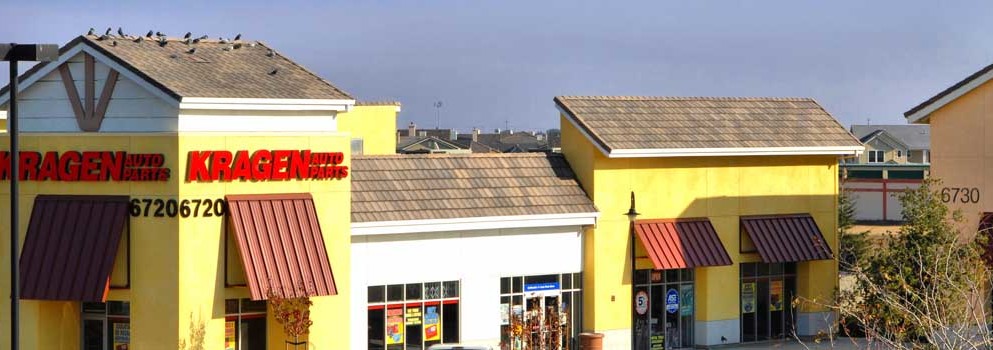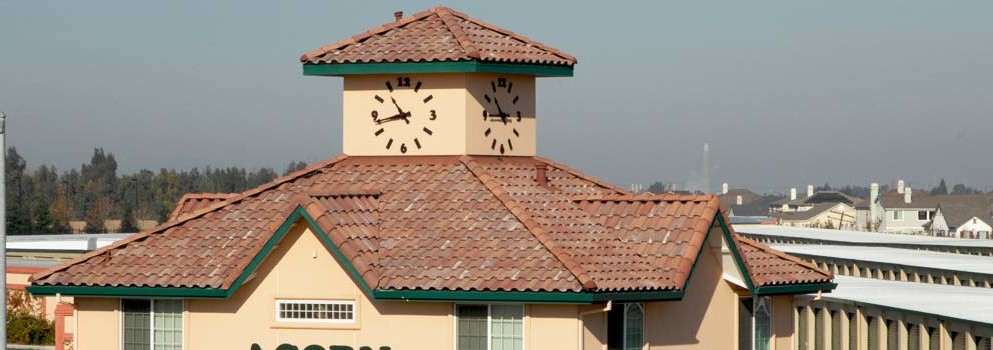Q: How can a home owner recognize when a roof system needs to be replaced?
A: Most of the time, roof system problems are realized after leaking or other serious damage occurs. When indoors, look for cracked paint, discolored plasterboard and peeling wallpaper as visual signs of damaged roof areas. Inspections two times a year often can uncover cracked, warped or missing shingles; loose seams and deteriorated flashings; accumulating dirt and soot in the gutters or downspouts; and other visible signs of roof system problems.
Q: If I decide to reroof, what are my options?
A: There are two basic options: a complete replacement of the roof system, which involves a tear-off of your existing roof, or re-cover the existing roof, which involves only the installation of a new roof. If you’ve already had one re-cover installed on your original roof system, check with Town & Country Roofing. In many instances, building code requirements allow no more than one roof system re-cover before a complete replacement is necessary.
Q: If my roof is leaking, do I need to have it replaced completely?
A: Not necessarily. Leaks can result from damage to your roof, or flashings that may have come loose. However, if your roof system has failed entirely because of improper installation or choosing inappropriate materials for the home or building, generally speaking, this is irreversible and must be replaced.
Q: Should I do the work myself?
A: We do not recommend the roofing project be done by the homeowner. Town & Country Roofing contractors are trained to safely and efficiently repair or replace your roof system. You can damage your system by incorrectly installing roofing materials or injure yourself by using improper roofing techniques.
As a home owner, if you choose to perform maintenance on your home or building, you should inspect your systems during the fall and spring. Check for cracked or curling shingles and clean gutters filled with dead leaves and other debris. Be sure to use a firmly braced or tied-off ladder equipped with rubber safety feet. We also recommend that you stay on the ladder and off of the roof system if possible.
Q: How long do roof systems generally last?
A: When determining the actual lifespan of your roof system, consider these factors: Environment, local climate conditions, proper roof system and building design, material quality, and proper application. With proper installation of your roof system, and proper maintenance, your roof system will last for about 20 years. Some roofing materials such as clay tile, slate, or certain metal roofs can remain durable longer.
Q: How much should I expect to spend on a new roof system?
A: The price of a new roof system depends greatly on such things as the materials selected, contractor doing the work, home or building, and location of the home or building, local labor rates and time of year. Keep in mind that price is only one factor, and it must be balanced with the quality of the materials and workmanship.
For each roofing material, there are different grades and corresponding prices. There also are a variety of styles and shapes. You need to look at the full product range and make a choice based on your budget and needs.
Within the roofing profession, there are different levels of expertise and craftsmanship. Town and Country Roofing insists on commitment & quality workmanship. At Town & Country roofing, we provide excellent service along with the most competitive rates in the industry.
Q: How can I determine my annual roofing cost?
A: When considering your roofing options, the following formula may help:
Total Cost (Materials and Labor) ÷ Life Expectancy of Roof System (in years) = Annual Roofing Cost
Q: Does Town & Country Roofing carry Liability Insurance?
A: Yes.
Q: Does Town & Country Roofing carry Workers Compensation Insurance?
A: Yes.
Terms you should know
Deck/sheathing:
The surface, usually plywood or oriented strand board (OSB), to which roofing materials are applied.
Dormer:
A small structure projecting from a sloped roof, usually with a window.
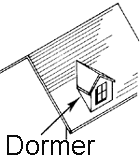
Drip edge:
An L-shaped strip (usually metal) installed along roof edges to allow water run off to drip clear of the deck, eaves and siding.
Eave:
The horizontal lower edge of a sloped roof.
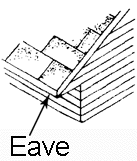
Fascia:
A flat board, band or face located at the edge of a roof.
Felt/underlayment:
A sheet of asphalt-saturated material (often called tar paper) used as a secondary layer of protection for the roof deck.
Fire rating:
System for classifying the fire resistances of various materials. Roofing materials are rated Class A, B or C, with Class A materials having the highest resistance to fire originating outside the structure.
Flashing:
Pieces of metal used to prevent the seepage of water around any intersection or projection in a roof system, such as vent pipes, chimneys, valleys and joints at vertical walls.
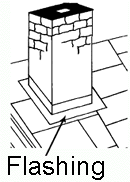
Louvers:
Slatted devices installed in a gable or soffit (the underside of eaves) to ventilate the space below a roof deck and equalize air temperature and moisture.

Oriented strand board (OSB):
Roof deck panels (4 by 8 feet) made of narrow bits of wood, installed lengthwise and crosswise in layers, and held together with a resin glue. OSB often is used as a substitute for plywood sheets.
Penetrations:
Vents, pipes, stacks, chimneys-anything that penetrates a roof deck.
Rafters:
The supporting framing to which a roof deck is attached.
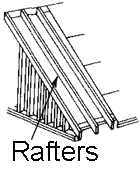
Rake:
The inclined edge of a roof over a wall.
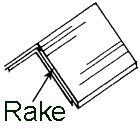
Ridge:
The top edge of two intersecting sloping roof surfaces.
Sheathing:
The boards or sheet materials that are fastened to rafters to cover a house or building.
Slope:
Measured by rise in inches for each 12 inches of horizontal run: A roof with a 4-in-12 slope rises 4 inches for every foot of horizontal distance.
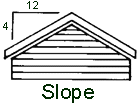
Square:
The common measurement for roof area. One square is 100 square feet (10 by 10 feet).
Truss:
Engineered components that supplement rafters in many newer homes and buildings. Trusses are designed for specific applications and cannot be cut or altered.
Valley:
The angle formed at the intersection of two sloping roof surfaces.
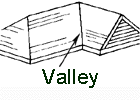
Vapor retarder:
A material designed to restrict the passage of water vapor through a roof system or wall.






